Dosing & Uses
Dosage Forms & Strengths
injectable solution
- 5mg/mL
tablet
- 100mg
- 200mg
- 300mg
Hypertension
100 mg PO q12hr initially; increased by 100 mg q12hr every 2-3 days
Usual dosage range: 200-400 mg PO q12hr; not to exceed 2400 mg/day
Hypertensive Emergency
20 mg IV over 2 minutes initially, then 40-80 mg IV q10min; total dose not to exceed 300 mg
Alternative: 1-2 mg/min by continuous IV infusion; total dose of 300 mg has been used
Dosing Modifications
Renal impairment: Not studied; no supplement needed after dialysis
Hepatic impairment: Not studied; dosage reduction may be necessary
Dosing Considerations
Monitor blood pressure every 5-10 minutes
Interactions
Interaction Checker
No Results

Contraindicated
Serious - Use Alternative
Significant - Monitor Closely
Minor

Contraindicated (1)
- iobenguane I 123
labetalol decreases effects of iobenguane I 123 by pharmacodynamic antagonism. Contraindicated. If clinically appropriate, discontinue drugs that decrease uptake of NE for at least 5 half-lives; may cause false-negative imaging results.
Serious - Use Alternative (19)
- acebutolol
acebutolol and labetalol both increase anti-hypertensive channel blocking. Avoid or Use Alternate Drug.
- atenolol
atenolol and labetalol both increase anti-hypertensive channel blocking. Avoid or Use Alternate Drug.
- betaxolol
betaxolol and labetalol both increase anti-hypertensive channel blocking. Avoid or Use Alternate Drug.
- bisoprolol
bisoprolol and labetalol both increase anti-hypertensive channel blocking. Avoid or Use Alternate Drug.
- carvedilol
carvedilol and labetalol both increase anti-hypertensive channel blocking. Avoid or Use Alternate Drug.
- celiprolol
celiprolol and labetalol both increase anti-hypertensive channel blocking. Avoid or Use Alternate Drug.
- esmolol
esmolol and labetalol both increase anti-hypertensive channel blocking. Avoid or Use Alternate Drug.
- iobenguane I 131
labetalol will decrease the level or effect of iobenguane I 131 by Other (see comment). Avoid or Use Alternate Drug. Based on the mechanism of action of iobenguane, drugs that reduce catecholamine uptake or that deplete catecholamine stores may interfere with iobenguane uptake into cells, and thus, reduce iobenguane efficacy. Discontinue interfering drugs for at least 5 half-lives before administration of either the dosimetry or an iobenguane dose. Do not administer these drugs until at least 7 days after each iobenguane dose.
- lofexidine
lofexidine, labetalol. Either increases effects of the other by pharmacodynamic synergism. Avoid or Use Alternate Drug. Avoid coadministration with other drugs that decrease pulse or blood pressure to mitigate risk of excessive bradycardia and hypotension.
- metoprolol
labetalol and metoprolol both increase anti-hypertensive channel blocking. Avoid or Use Alternate Drug.
- nadolol
labetalol and nadolol both increase anti-hypertensive channel blocking. Avoid or Use Alternate Drug.
- nebivolol
labetalol and nebivolol both increase anti-hypertensive channel blocking. Avoid or Use Alternate Drug.
- penbutolol
labetalol and penbutolol both increase anti-hypertensive channel blocking. Avoid or Use Alternate Drug.
- pindolol
labetalol and pindolol both increase anti-hypertensive channel blocking. Avoid or Use Alternate Drug.
- propranolol
labetalol and propranolol both increase anti-hypertensive channel blocking. Avoid or Use Alternate Drug.
- sotalol
labetalol and sotalol both increase anti-hypertensive channel blocking. Avoid or Use Alternate Drug.
- timolol
labetalol and timolol both increase anti-hypertensive channel blocking. Avoid or Use Alternate Drug.
- umeclidinium bromide/vilanterol inhaled
labetalol, umeclidinium bromide/vilanterol inhaled. pharmacodynamic antagonism. Avoid or Use Alternate Drug. If a beta-blocker must be used in patients with COPD taking a beta-agonist, consider using a beta-blocker that is beta-1 selective .
- vilanterol/fluticasone furoate inhaled
labetalol, vilanterol/fluticasone furoate inhaled. pharmacodynamic antagonism. Avoid or Use Alternate Drug. If a beta-blocker must be used in patients with COPD taking a beta-agonist, consider using a beta-blocker that is beta-1 selective .
Monitor Closely (171)
- acebutolol
acebutolol and labetalol both increase serum potassium. Use Caution/Monitor.
- aceclofenac
labetalol and aceclofenac both increase serum potassium. Use Caution/Monitor.
aceclofenac decreases effects of labetalol by pharmacodynamic antagonism. Use Caution/Monitor. Long term (>1 wk) NSAID use. NSAIDs decrease prostaglandin synthesis. - acemetacin
labetalol and acemetacin both increase serum potassium. Use Caution/Monitor.
acemetacin decreases effects of labetalol by pharmacodynamic antagonism. Use Caution/Monitor. Long term (>1 wk) NSAID use. NSAIDs decrease prostaglandin synthesis. - albuterol
labetalol increases and albuterol decreases serum potassium. Effect of interaction is not clear, use caution. Use Caution/Monitor.
labetalol decreases effects of albuterol by pharmacodynamic antagonism. Use Caution/Monitor. - aldesleukin
aldesleukin increases effects of labetalol by pharmacodynamic synergism. Use Caution/Monitor. Risk of hypotension.
- alfuzosin
alfuzosin and labetalol both increase anti-hypertensive channel blocking. Modify Therapy/Monitor Closely.
- aluminum hydroxide
aluminum hydroxide decreases levels of labetalol by inhibition of GI absorption. Applies only to oral form of both agents. Use Caution/Monitor. Separate by 2 hours.
- amifostine
amifostine, labetalol. Either increases effects of the other by pharmacodynamic synergism. Modify Therapy/Monitor Closely. Coadministration with blood pressure lowering agents may increase the risk and severity of hypotension associated with amifostine. When amifostine is used at chemotherapeutic doses, withhold blood pressure lowering medications for 24 hr prior to amifostine; if blood pressure lowering medication cannot be withheld, do not administer amifostine.
- amiloride
labetalol and amiloride both increase serum potassium. Modify Therapy/Monitor Closely.
- amiodarone
amiodarone, labetalol. Mechanism: pharmacodynamic synergism. Use Caution/Monitor. Risk of cardiotoxicity with bradycardia.
- amlodipine
labetalol and amlodipine both increase anti-hypertensive channel blocking. Modify Therapy/Monitor Closely.
- amobarbital
amobarbital decreases levels of labetalol by increasing metabolism. Use Caution/Monitor. Consider a higher beta-blocker dose during coadministration of amobarbital. Atenolol, sotalol, nadolol less likely to be affected than other beta blockers.
- arformoterol
labetalol increases and arformoterol decreases serum potassium. Effect of interaction is not clear, use caution. Use Caution/Monitor.
labetalol decreases effects of arformoterol by pharmacodynamic antagonism. Use Caution/Monitor. - asenapine
asenapine and labetalol both increase anti-hypertensive channel blocking. Modify Therapy/Monitor Closely.
- aspirin
labetalol and aspirin both increase serum potassium. Use Caution/Monitor.
aspirin decreases effects of labetalol by pharmacodynamic antagonism. Use Caution/Monitor. Long term (>1 wk) NSAID use. NSAIDs decrease prostaglandin synthesis. - aspirin rectal
labetalol and aspirin rectal both increase serum potassium. Use Caution/Monitor.
aspirin rectal decreases effects of labetalol by pharmacodynamic antagonism. Use Caution/Monitor. Long term (>1 wk) NSAID use. NSAIDs decrease prostaglandin synthesis. - aspirin/citric acid/sodium bicarbonate
aspirin/citric acid/sodium bicarbonate decreases effects of labetalol by pharmacodynamic antagonism. Use Caution/Monitor. Long term (>1 wk) NSAID use. NSAIDs decrease prostaglandin synthesis.
labetalol and aspirin/citric acid/sodium bicarbonate both increase serum potassium. Use Caution/Monitor. - atazanavir
atazanavir increases effects of labetalol by pharmacodynamic synergism. Use Caution/Monitor. Increased risk of hypotension, bradycardia, AV block, and prolonged PR interval. Consider lowering beta blocker dose.
- atenolol
atenolol and labetalol both increase serum potassium. Use Caution/Monitor.
- avanafil
avanafil increases effects of labetalol by pharmacodynamic synergism. Use Caution/Monitor. Risk of hypotension.
- bendroflumethiazide
labetalol increases and bendroflumethiazide decreases serum potassium. Effect of interaction is not clear, use caution. Use Caution/Monitor.
- betaxolol
betaxolol and labetalol both increase serum potassium. Use Caution/Monitor.
- bismuth subsalicylate
bismuth subsalicylate, labetalol. Mechanism: pharmacodynamic synergism. Use Caution/Monitor. Blockage of renal prostaglandin synthesis; may cause severe hypertension.
- bisoprolol
bisoprolol and labetalol both increase serum potassium. Use Caution/Monitor.
- bretylium
labetalol, bretylium. Either increases effects of the other by pharmacodynamic synergism. Modify Therapy/Monitor Closely. Each drug may cause hypotension.
- bumetanide
labetalol increases and bumetanide decreases serum potassium. Effect of interaction is not clear, use caution. Use Caution/Monitor.
- butabarbital
butabarbital decreases levels of labetalol by increasing metabolism. Use Caution/Monitor. Consider a higher beta-blocker dose during coadministration of butabarbital. Atenolol, sotalol, nadolol less likely to be affected than other beta blockers.
- butalbital
butalbital decreases levels of labetalol by increasing metabolism. Use Caution/Monitor. Consider a higher beta-blocker dose during coadministration of butalbital. Atenolol, sotalol, nadolol less likely to be affected than other beta blockers.
- calcium acetate
calcium acetate decreases effects of labetalol by unspecified interaction mechanism. Use Caution/Monitor.
- calcium carbonate
calcium carbonate decreases effects of labetalol by unspecified interaction mechanism. Use Caution/Monitor.
calcium carbonate decreases levels of labetalol by inhibition of GI absorption. Applies only to oral form of both agents. Use Caution/Monitor. Separate by 2 hours. - calcium chloride
calcium chloride decreases effects of labetalol by unspecified interaction mechanism. Use Caution/Monitor.
- calcium citrate
calcium citrate decreases effects of labetalol by unspecified interaction mechanism. Use Caution/Monitor.
- calcium gluconate
calcium gluconate decreases effects of labetalol by unspecified interaction mechanism. Use Caution/Monitor.
- candesartan
candesartan and labetalol both increase serum potassium. Use Caution/Monitor.
labetalol, candesartan. Mechanism: pharmacodynamic synergism. Use Caution/Monitor. Risk of fetal compromise if given during pregnancy. - carbenoxolone
labetalol increases and carbenoxolone decreases serum potassium. Effect of interaction is not clear, use caution. Use Caution/Monitor.
- carbidopa
carbidopa increases effects of labetalol by pharmacodynamic synergism. Use Caution/Monitor. Therapy with carbidopa, given with or without levodopa or carbidopa-levodopa combination products, is started, dosage adjustment of the antihypertensive drug may be required.
- carvedilol
carvedilol and labetalol both increase serum potassium. Use Caution/Monitor.
- celecoxib
labetalol and celecoxib both increase serum potassium. Use Caution/Monitor.
celecoxib decreases effects of labetalol by pharmacodynamic antagonism. Use Caution/Monitor. Long term (>1 wk) NSAID use. NSAIDs decrease prostaglandin synthesis. - celiprolol
celiprolol and labetalol both increase serum potassium. Use Caution/Monitor.
- chlorothiazide
labetalol increases and chlorothiazide decreases serum potassium. Effect of interaction is not clear, use caution. Use Caution/Monitor.
- chlorthalidone
labetalol increases and chlorthalidone decreases serum potassium. Effect of interaction is not clear, use caution. Use Caution/Monitor.
- choline magnesium trisalicylate
labetalol and choline magnesium trisalicylate both increase serum potassium. Use Caution/Monitor.
choline magnesium trisalicylate decreases effects of labetalol by pharmacodynamic antagonism. Use Caution/Monitor. Long term (>1 wk) NSAID use. NSAIDs decrease prostaglandin synthesis. - clevidipine
labetalol and clevidipine both increase anti-hypertensive channel blocking. Modify Therapy/Monitor Closely.
- cyclopenthiazide
labetalol increases and cyclopenthiazide decreases serum potassium. Effect of interaction is not clear, use caution. Use Caution/Monitor.
- desflurane
desflurane, labetalol. Either increases effects of the other by pharmacodynamic synergism. Use Caution/Monitor. Risk of hypotension.
- diclofenac
labetalol and diclofenac both increase serum potassium. Use Caution/Monitor.
diclofenac decreases effects of labetalol by pharmacodynamic antagonism. Use Caution/Monitor. Long term (>1 wk) NSAID use. NSAIDs decrease prostaglandin synthesis. - diflunisal
labetalol and diflunisal both increase serum potassium. Use Caution/Monitor.
diflunisal decreases effects of labetalol by pharmacodynamic antagonism. Use Caution/Monitor. Long term (>1 wk) NSAID use. NSAIDs decrease prostaglandin synthesis. - digoxin
labetalol and digoxin both increase serum potassium. Use Caution/Monitor.
labetalol increases effects of digoxin by pharmacodynamic synergism. Use Caution/Monitor. Enhanced bradycardia. - diltiazem
labetalol and diltiazem both increase anti-hypertensive channel blocking. Modify Therapy/Monitor Closely.
- dobutamine
labetalol increases and dobutamine decreases serum potassium. Effect of interaction is not clear, use caution. Use Caution/Monitor.
labetalol decreases effects of dobutamine by pharmacodynamic antagonism. Use Caution/Monitor. - dopexamine
labetalol increases and dopexamine decreases serum potassium. Effect of interaction is not clear, use caution. Use Caution/Monitor.
labetalol decreases effects of dopexamine by pharmacodynamic antagonism. Use Caution/Monitor. - doxazosin
doxazosin and labetalol both increase anti-hypertensive channel blocking. Modify Therapy/Monitor Closely.
- drospirenone
labetalol and drospirenone both increase serum potassium. Modify Therapy/Monitor Closely.
- ephedrine
labetalol increases and ephedrine decreases serum potassium. Effect of interaction is not clear, use caution. Use Caution/Monitor.
labetalol decreases effects of ephedrine by pharmacodynamic antagonism. Use Caution/Monitor. - epinephrine
labetalol increases and epinephrine decreases serum potassium. Effect of interaction is not clear, use caution. Use Caution/Monitor.
labetalol decreases effects of epinephrine by pharmacodynamic antagonism. Use Caution/Monitor. - epinephrine racemic
labetalol increases and epinephrine racemic decreases serum potassium. Effect of interaction is not clear, use caution. Use Caution/Monitor.
labetalol decreases effects of epinephrine racemic by pharmacodynamic antagonism. Use Caution/Monitor. - eprosartan
eprosartan and labetalol both increase serum potassium. Use Caution/Monitor.
labetalol, eprosartan. Mechanism: pharmacodynamic synergism. Use Caution/Monitor. Risk of fetal compromise if given during pregnancy. - esmolol
esmolol and labetalol both increase serum potassium. Use Caution/Monitor.
- ethacrynic acid
labetalol increases and ethacrynic acid decreases serum potassium. Effect of interaction is not clear, use caution. Use Caution/Monitor.
- ether
labetalol, ether. Either increases effects of the other by pharmacodynamic synergism. Use Caution/Monitor. Both beta blockers and ether depress the myocardium; consider lowering beta blocker dose if ether used for anesthesia.
- etodolac
labetalol and etodolac both increase serum potassium. Use Caution/Monitor.
etodolac decreases effects of labetalol by pharmacodynamic antagonism. Use Caution/Monitor. Long term (>1 wk) NSAID use. NSAIDs decrease prostaglandin synthesis. - etomidate
etomidate, labetalol. Either increases effects of the other by pharmacodynamic synergism. Use Caution/Monitor. Risk of hypotension.
- etrasimod
etrasimod, labetalol. pharmacodynamic synergism. Use Caution/Monitor. Transient decrease in heart rate and AV conduction delays may occur when initiating etrasimod. Concomitant use of etrasimod in patients receiving stable beta-blocker treatment did not result in additive effects on heart rate reduction. However, risk of additive heart rate reduction following initiation of beta-blocker therapy with stable etrasimod treatment or concomitant use with other drugs that may decrease heart rate is unknown. .
- felodipine
labetalol and felodipine both increase anti-hypertensive channel blocking. Modify Therapy/Monitor Closely.
- fenbufen
labetalol and fenbufen both increase serum potassium. Use Caution/Monitor.
- fenoprofen
labetalol and fenoprofen both increase serum potassium. Use Caution/Monitor.
fenoprofen decreases effects of labetalol by pharmacodynamic antagonism. Use Caution/Monitor. Long term (>1 wk) NSAID use. NSAIDs decrease prostaglandin synthesis. - fingolimod
labetalol increases effects of fingolimod by pharmacodynamic synergism. Use Caution/Monitor. Both medications decrease heart rate. Monitor patients on concomitant therapy, particularly in the first 6 hours after fingolimod is initiated or after a treatment interruption of at least two weeks, for bradycardia and atrioventricular block. To identify underlying risk factors of bradycardia and AV block, obtain a new or recent ECG in patients using beta-blockers prior to starting fingolimod.
- flurbiprofen
labetalol and flurbiprofen both increase serum potassium. Use Caution/Monitor.
flurbiprofen decreases effects of labetalol by pharmacodynamic antagonism. Use Caution/Monitor. Long term (>1 wk) NSAID use. NSAIDs decrease prostaglandin synthesis. - formoterol
labetalol increases and formoterol decreases serum potassium. Effect of interaction is not clear, use caution. Use Caution/Monitor.
labetalol decreases effects of formoterol by pharmacodynamic antagonism. Use Caution/Monitor. - furosemide
labetalol increases and furosemide decreases serum potassium. Effect of interaction is not clear, use caution. Use Caution/Monitor.
- gentamicin
labetalol increases and gentamicin decreases serum potassium. Effect of interaction is not clear, use caution. Use Caution/Monitor.
- glucagon
glucagon decreases toxicity of labetalol by sympathetic (adrenergic) effects, including increased blood pressure and heart rate. Use Caution/Monitor. Coadministration of glucagon with beta-blockers may have transiently increased pulse and blood pressure.
- glucagon intranasal
glucagon intranasal decreases toxicity of labetalol by sympathetic (adrenergic) effects, including increased blood pressure and heart rate. Use Caution/Monitor. Coadministration of glucagon with beta-blockers may have transiently increased pulse and blood pressure.
- hydralazine
hydralazine increases effects of labetalol by pharmacodynamic synergism. Use Caution/Monitor. Additive hypotensive effects.
- hydrochlorothiazide
labetalol increases and hydrochlorothiazide decreases serum potassium. Effect of interaction is not clear, use caution. Use Caution/Monitor.
- ibuprofen
labetalol and ibuprofen both increase serum potassium. Use Caution/Monitor.
ibuprofen decreases effects of labetalol by pharmacodynamic antagonism. Use Caution/Monitor. NSAIDs diminish antihypertensive effects of beta-blockers. - ibuprofen IV
ibuprofen IV decreases effects of labetalol by pharmacodynamic antagonism. Use Caution/Monitor. NSAIDs diminish antihypertensive effects of beta-blockers.
labetalol and ibuprofen IV both increase serum potassium. Use Caution/Monitor. - indapamide
labetalol increases and indapamide decreases serum potassium. Effect of interaction is not clear, use caution. Use Caution/Monitor.
- indomethacin
labetalol and indomethacin both increase serum potassium. Use Caution/Monitor.
indomethacin decreases effects of labetalol by pharmacodynamic antagonism. Use Caution/Monitor. Long term (>1 wk) NSAID use. NSAIDs decrease prostaglandin synthesis. - insulin degludec
labetalol, insulin degludec. Other (see comment). Modify Therapy/Monitor Closely. Comment: Beta-blockers may either increase or decrease the blood glucose lowering effect of insulin; beta-blockers can prolong hypoglycemia (interference with glycogenolysis) or cause hyperglycemia (insulin secretion inhibited).
- insulin degludec/insulin aspart
labetalol, insulin degludec/insulin aspart. Other (see comment). Modify Therapy/Monitor Closely. Comment: Beta-blockers may either increase or decrease the blood glucose lowering effect of insulin; beta-blockers can prolong hypoglycemia (interference with glycogenolysis) or cause hyperglycemia (insulin secretion inhibited).
- insulin inhaled
labetalol, insulin inhaled. Other (see comment). Modify Therapy/Monitor Closely. Comment: Beta-blockers may either increase or decrease the blood glucose lowering effect of insulin; beta-blockers can prolong hypoglycemia (interference with glycogenolysis) or cause hyperglycemia (insulin secretion inhibited).
- iodixanol
labetalol increases toxicity of iodixanol by unspecified interaction mechanism. Use Caution/Monitor. Use of beta-blockers lowers the threshold for and increases the severity of contrast reactions, and reduces the responsiveness of treatment of hypersensitivity reactions with epinephrine. .
- irbesartan
irbesartan and labetalol both increase serum potassium. Use Caution/Monitor.
labetalol, irbesartan. Mechanism: pharmacodynamic synergism. Use Caution/Monitor. Risk of fetal compromise if given during pregnancy. - isoproterenol
labetalol increases and isoproterenol decreases serum potassium. Effect of interaction is not clear, use caution. Use Caution/Monitor.
labetalol decreases effects of isoproterenol by pharmacodynamic antagonism. Use Caution/Monitor. - isradipine
labetalol and isradipine both increase anti-hypertensive channel blocking. Modify Therapy/Monitor Closely.
- ivabradine
ivabradine, labetalol. Either increases effects of the other by pharmacodynamic synergism. Modify Therapy/Monitor Closely. Most patients receiving ivabradine will also be treated with a beta-blocker. The risk of bradycardia increases with coadministration of drugs that slow heart rate (eg, digoxin, amiodarone, beta-blockers). Monitor heart rate in patients taking ivabradine with other negative chronotropes.
- ketamine
ketamine, labetalol. Either increases effects of the other by pharmacodynamic synergism. Use Caution/Monitor. Risk of hypotension.
- ketoprofen
labetalol and ketoprofen both increase serum potassium. Use Caution/Monitor.
ketoprofen decreases effects of labetalol by pharmacodynamic antagonism. Use Caution/Monitor. Long term (>1 wk) NSAID use. NSAIDs decrease prostaglandin synthesis. - ketorolac
labetalol and ketorolac both increase serum potassium. Use Caution/Monitor.
ketorolac decreases effects of labetalol by pharmacodynamic antagonism. Use Caution/Monitor. Long term (>1 wk) NSAID use. NSAIDs decrease prostaglandin synthesis. - ketorolac intranasal
labetalol and ketorolac intranasal both increase serum potassium. Use Caution/Monitor.
ketorolac intranasal decreases effects of labetalol by pharmacodynamic antagonism. Use Caution/Monitor. Long term (>1 wk) NSAID use. NSAIDs decrease prostaglandin synthesis. - lasmiditan
labetalol increases effects of lasmiditan by pharmacodynamic synergism. Use Caution/Monitor. Lasmiditan has been associated with a lowering of heart rate (HR). In a drug interaction study, addition of a single 200-mg dose of lasmiditan to propranolol decreased HR by an additional 5 bpm compared to propranolol alone, for a mean maximum of 19 bpm.
- levalbuterol
labetalol increases and levalbuterol decreases serum potassium. Effect of interaction is not clear, use caution. Use Caution/Monitor.
labetalol decreases effects of levalbuterol by pharmacodynamic antagonism. Use Caution/Monitor. - levodopa
levodopa increases effects of labetalol by pharmacodynamic synergism. Use Caution/Monitor. Consider decreasing dosage of antihypertensive agent.
- lornoxicam
labetalol and lornoxicam both increase serum potassium. Use Caution/Monitor.
lornoxicam decreases effects of labetalol by pharmacodynamic antagonism. Use Caution/Monitor. Long term (>1 wk) NSAID use. NSAIDs decrease prostaglandin synthesis. - losartan
losartan and labetalol both increase serum potassium. Use Caution/Monitor.
labetalol, losartan. Mechanism: pharmacodynamic synergism. Use Caution/Monitor. Risk of fetal compromise if given during pregnancy. - lurasidone
lurasidone increases effects of labetalol by Other (see comment). Use Caution/Monitor. Comment: Potential for increased risk of hypotension with concurrent use. Monitor blood pressure and adjust dose of antihypertensive agent as needed.
- maraviroc
maraviroc, labetalol. Either increases effects of the other by pharmacodynamic synergism. Use Caution/Monitor. Increased risk of orthostatic hypotension.
- meclofenamate
meclofenamate decreases effects of labetalol by pharmacodynamic antagonism. Use Caution/Monitor. Long term (>1 wk) NSAID use. NSAIDs decrease prostaglandin synthesis.
labetalol and meclofenamate both increase serum potassium. Use Caution/Monitor. - mefenamic acid
labetalol and mefenamic acid both increase serum potassium. Use Caution/Monitor.
mefenamic acid decreases effects of labetalol by pharmacodynamic antagonism. Use Caution/Monitor. Long term (>1 wk) NSAID use. NSAIDs decrease prostaglandin synthesis. - mefloquine
mefloquine increases levels of labetalol by decreasing metabolism. Use Caution/Monitor. Risk of arrhythmia.
- meloxicam
labetalol and meloxicam both increase serum potassium. Use Caution/Monitor.
meloxicam decreases effects of labetalol by pharmacodynamic antagonism. Use Caution/Monitor. Long term (>1 wk) NSAID use. NSAIDs decrease prostaglandin synthesis. - metaproterenol
labetalol increases and metaproterenol decreases serum potassium. Effect of interaction is not clear, use caution. Use Caution/Monitor.
labetalol decreases effects of metaproterenol by pharmacodynamic antagonism. Use Caution/Monitor. - methyclothiazide
labetalol increases and methyclothiazide decreases serum potassium. Effect of interaction is not clear, use caution. Use Caution/Monitor. .
- metolazone
labetalol increases and metolazone decreases serum potassium. Effect of interaction is not clear, use caution. Use Caution/Monitor.
- metoprolol
labetalol and metoprolol both increase serum potassium. Use Caution/Monitor.
- mipomersen
mipomersen, labetalol. Either increases toxicity of the other by Other (see comment). Use Caution/Monitor. Comment: Both drugs have potential to increase hepatic enzymes; monitor LFTs.
- moxisylyte
moxisylyte and labetalol both increase anti-hypertensive channel blocking. Modify Therapy/Monitor Closely.
- nabumetone
labetalol and nabumetone both increase serum potassium. Use Caution/Monitor.
nabumetone decreases effects of labetalol by pharmacodynamic antagonism. Use Caution/Monitor. Long term (>1 wk) NSAID use. NSAIDs decrease prostaglandin synthesis. - nadolol
labetalol and nadolol both increase serum potassium. Use Caution/Monitor.
- naproxen
labetalol and naproxen both increase serum potassium. Use Caution/Monitor.
naproxen decreases effects of labetalol by pharmacodynamic antagonism. Use Caution/Monitor. Long term (>1 wk) NSAID use. NSAIDs decrease prostaglandin synthesis. - nebivolol
labetalol and nebivolol both increase serum potassium. Use Caution/Monitor.
- nicardipine
labetalol and nicardipine both increase anti-hypertensive channel blocking. Modify Therapy/Monitor Closely.
- nifedipine
labetalol and nifedipine both increase anti-hypertensive channel blocking. Modify Therapy/Monitor Closely.
- nirmatrelvir/ritonavir
nirmatrelvir/ritonavir will decrease the level or effect of labetalol by Other (see comment). Use Caution/Monitor. Labetalol undergoes glucuronidation by UGT1A1 and 2B7. Coadministration may decrease labetalol exposure owing to induction of UGT2B7 by ritonavir. Since induction reaches maximal effect after several days and the short duration of nirmatrelvir/ritonavir treatment, no dosage modification is needed.
- nisoldipine
labetalol and nisoldipine both increase anti-hypertensive channel blocking. Modify Therapy/Monitor Closely.
- nitroglycerin rectal
nitroglycerin rectal, labetalol. Either increases effects of the other by pharmacodynamic synergism. Use Caution/Monitor. Beta-blockers blunt the reflex tachycardia produced by nitroglycerin without preventing its hypotensive effects. If beta-blockers are used with nitroglycerin in patients with angina pectoris, additional hypotensive effects may occur.
- norepinephrine
labetalol increases and norepinephrine decreases serum potassium. Effect of interaction is not clear, use caution. Use Caution/Monitor.
labetalol decreases effects of norepinephrine by pharmacodynamic antagonism. Use Caution/Monitor. - olanzapine/samidorphan
olanzapine/samidorphan increases effects of labetalol by pharmacodynamic synergism. Modify Therapy/Monitor Closely. Monitor blood pressure and reduce antihypertensive drug dosage in accordance with its product labeling.
- olmesartan
olmesartan and labetalol both increase serum potassium. Use Caution/Monitor.
labetalol, olmesartan. Mechanism: pharmacodynamic synergism. Use Caution/Monitor. Risk of fetal compromise if given during pregnancy. - olodaterol inhaled
labetalol, olodaterol inhaled. Either decreases effects of the other by pharmacodynamic antagonism. Use Caution/Monitor. Beta-blockers and olodaterol may interfere with the effect of each other when administered concurrently. Beta-blockers may produce severe bronchospasm in COPD patients. Therefore, patients with COPD should not normally be treated with beta-blockers. However, under certain circumstances, e.g. as prophylaxis after myocardial infarction, there may be no acceptable alternatives to the use of beta-blockers in patients with COPD. In this setting, cardioselective beta-blockers could be considered, although they should be administered with caution.
- oxaprozin
labetalol and oxaprozin both increase serum potassium. Use Caution/Monitor.
oxaprozin decreases effects of labetalol by pharmacodynamic antagonism. Use Caution/Monitor. Long term (>1 wk) NSAID use. NSAIDs decrease prostaglandin synthesis. - oxymetazoline topical
oxymetazoline topical increases and labetalol decreases sympathetic (adrenergic) effects, including increased blood pressure and heart rate. Effect of interaction is not clear, use caution. Use Caution/Monitor.
- parecoxib
labetalol and parecoxib both increase serum potassium. Use Caution/Monitor.
parecoxib decreases effects of labetalol by pharmacodynamic antagonism. Use Caution/Monitor. Long term (>1 wk) NSAID use. NSAIDs decrease prostaglandin synthesis. - penbutolol
labetalol and penbutolol both increase serum potassium. Use Caution/Monitor.
- pentobarbital
pentobarbital decreases levels of labetalol by increasing metabolism. Use Caution/Monitor. Consider a higher beta-blocker dose during coadministration of pentobarbital. Atenolol, sotalol, nadolol less likely to be affected than other beta blockers.
- phenobarbital
phenobarbital decreases levels of labetalol by increasing metabolism. Use Caution/Monitor. Consider a higher beta-blocker dose during coadministration of phenobarbital. Atenolol, sotalol, nadolol less likely to be affected than other beta blockers.
- phenoxybenzamine
phenoxybenzamine and labetalol both increase anti-hypertensive channel blocking. Modify Therapy/Monitor Closely.
- phentolamine
phentolamine and labetalol both increase anti-hypertensive channel blocking. Modify Therapy/Monitor Closely.
- pindolol
labetalol and pindolol both increase serum potassium. Use Caution/Monitor.
- pirbuterol
labetalol increases and pirbuterol decreases serum potassium. Effect of interaction is not clear, use caution. Use Caution/Monitor.
labetalol decreases effects of pirbuterol by pharmacodynamic antagonism. Use Caution/Monitor. - piroxicam
labetalol and piroxicam both increase serum potassium. Use Caution/Monitor.
piroxicam decreases effects of labetalol by pharmacodynamic antagonism. Use Caution/Monitor. Long term (>1 wk) NSAID use. NSAIDs decrease prostaglandin synthesis. - ponesimod
ponesimod and labetalol both increase pharmacodynamic synergism. Use Caution/Monitor. Beta-blockers may have additive effects on lowering HR. Consider resting HR before initiating ponesimod in patients on stable dose of beta-blocker. Refer to the ponesimod prescribing information for more dosing information.
- potassium acid phosphate
labetalol and potassium acid phosphate both increase serum potassium. Modify Therapy/Monitor Closely.
- potassium chloride
labetalol and potassium chloride both increase serum potassium. Modify Therapy/Monitor Closely.
- potassium citrate
labetalol and potassium citrate both increase serum potassium. Modify Therapy/Monitor Closely.
- prazosin
prazosin and labetalol both increase anti-hypertensive channel blocking. Modify Therapy/Monitor Closely.
- primidone
primidone decreases levels of labetalol by increasing metabolism. Use Caution/Monitor. Consider a higher beta-blocker dose during coadministration of primidone. Atenolol, sotalol, nadolol less likely to be affected than other beta blockers.
- propofol
propofol, labetalol. Either increases effects of the other by pharmacodynamic synergism. Use Caution/Monitor. Risk of hypotension.
- propranolol
labetalol and propranolol both increase serum potassium. Use Caution/Monitor.
- sacubitril/valsartan
sacubitril/valsartan and labetalol both increase serum potassium. Use Caution/Monitor.
labetalol, sacubitril/valsartan. Mechanism: pharmacodynamic synergism. Use Caution/Monitor. Risk of fetal compromise if given during pregnancy. - salicylates (non-asa)
labetalol and salicylates (non-asa) both increase serum potassium. Use Caution/Monitor.
salicylates (non-asa) decreases effects of labetalol by pharmacodynamic antagonism. Use Caution/Monitor. Long term (>1 wk) NSAID use. NSAIDs decrease prostaglandin synthesis. - salmeterol
labetalol increases and salmeterol decreases serum potassium. Effect of interaction is not clear, use caution. Use Caution/Monitor.
labetalol decreases effects of salmeterol by pharmacodynamic antagonism. Use Caution/Monitor. - salsalate
labetalol and salsalate both increase serum potassium. Use Caution/Monitor.
salsalate decreases effects of labetalol by pharmacodynamic antagonism. Use Caution/Monitor. Long term (>1 wk) NSAID use. NSAIDs decrease prostaglandin synthesis. - saquinavir
saquinavir, labetalol. Either increases toxicity of the other by pharmacodynamic synergism. Modify Therapy/Monitor Closely. Use alternatives if available. Increased risk of PR or QT prolongation and cardiac arrhythmias.
- secobarbital
secobarbital decreases levels of labetalol by increasing metabolism. Use Caution/Monitor. Consider a higher beta-blocker dose during coadministration of secobarbital. Atenolol, sotalol, nadolol less likely to be affected than other beta blockers.
- sevoflurane
sevoflurane, labetalol. Either increases effects of the other by pharmacodynamic synergism. Use Caution/Monitor. Risk of hypotension.
- sildenafil
labetalol increases effects of sildenafil by additive vasodilation. Use Caution/Monitor. Sildenafil has systemic vasodilatory properties and may further lower blood pressure in patients taking antihypertensive medications. Monitor blood pressure response to sildenafil in patients receiving concurrent blood pressure lowering therapy.
- silodosin
silodosin and labetalol both increase anti-hypertensive channel blocking. Modify Therapy/Monitor Closely.
- siponimod
siponimod, labetalol. Either increases effects of the other by pharmacodynamic synergism. Modify Therapy/Monitor Closely. Caution when siponimod is initiated in patients receiving beta-blocker treatment because of additive effects on lowering heart rate. Temporary interruption of beta-blocker may be needed before initiating siponimod. Beta-blocker treatment can be initiated in patients receiving stable doses of siponimod.
- sodium bicarbonate
sodium bicarbonate decreases levels of labetalol by inhibition of GI absorption. Applies only to oral form of both agents. Use Caution/Monitor. Separate by 2 hours.
- sodium citrate/citric acid
sodium citrate/citric acid decreases levels of labetalol by inhibition of GI absorption. Applies only to oral form of both agents. Use Caution/Monitor. Separate by 2 hours.
- sotalol
labetalol and sotalol both increase serum potassium. Use Caution/Monitor.
- spironolactone
labetalol and spironolactone both increase serum potassium. Modify Therapy/Monitor Closely.
- succinylcholine
labetalol and succinylcholine both increase serum potassium. Use Caution/Monitor.
- sulfasalazine
labetalol and sulfasalazine both increase serum potassium. Use Caution/Monitor.
sulfasalazine decreases effects of labetalol by pharmacodynamic antagonism. Use Caution/Monitor. Long term (>1 wk) NSAID use. NSAIDs decrease prostaglandin synthesis. - sulindac
labetalol and sulindac both increase serum potassium. Use Caution/Monitor.
sulindac decreases effects of labetalol by pharmacodynamic antagonism. Use Caution/Monitor. Long term (>1 wk) NSAID use. NSAIDs decrease prostaglandin synthesis. - tadalafil
tadalafil increases effects of labetalol by pharmacodynamic synergism. Use Caution/Monitor. Risk of hypotension.
- telmisartan
telmisartan and labetalol both increase serum potassium. Use Caution/Monitor.
labetalol, telmisartan. Mechanism: pharmacodynamic synergism. Use Caution/Monitor. Risk of fetal compromise if given during pregnancy. - terazosin
terazosin and labetalol both increase anti-hypertensive channel blocking. Modify Therapy/Monitor Closely.
- terbutaline
labetalol increases and terbutaline decreases serum potassium. Effect of interaction is not clear, use caution. Use Caution/Monitor.
labetalol decreases effects of terbutaline by pharmacodynamic antagonism. Use Caution/Monitor. - theophylline
labetalol, theophylline. Other (see comment). Use Caution/Monitor. Comment: Beta blockers (esp. non selective) antagonize theophylline effects, while at the same time increasing theophylline levels and toxicity (mechanism: decreased theophylline metabolism). Smoking increases risk of interaction.
- timolol
labetalol and timolol both increase serum potassium. Use Caution/Monitor.
- tolfenamic acid
labetalol and tolfenamic acid both increase serum potassium. Use Caution/Monitor.
tolfenamic acid decreases effects of labetalol by pharmacodynamic antagonism. Use Caution/Monitor. Long term (>1 wk) NSAID use. NSAIDs decrease prostaglandin synthesis. - tolmetin
labetalol and tolmetin both increase serum potassium. Use Caution/Monitor.
tolmetin decreases effects of labetalol by pharmacodynamic antagonism. Use Caution/Monitor. Long term (>1 wk) NSAID use. NSAIDs decrease prostaglandin synthesis. - tolvaptan
labetalol and tolvaptan both increase serum potassium. Use Caution/Monitor.
- torsemide
labetalol increases and torsemide decreases serum potassium. Effect of interaction is not clear, use caution. Use Caution/Monitor.
- triamterene
labetalol and triamterene both increase serum potassium. Modify Therapy/Monitor Closely.
- valsartan
valsartan and labetalol both increase serum potassium. Use Caution/Monitor.
labetalol, valsartan. Mechanism: pharmacodynamic synergism. Use Caution/Monitor. Risk of fetal compromise if given during pregnancy. - verapamil
labetalol and verapamil both increase anti-hypertensive channel blocking. Modify Therapy/Monitor Closely.
- xipamide
xipamide increases effects of labetalol by pharmacodynamic synergism. Use Caution/Monitor.
Minor (31)
- adenosine
labetalol, adenosine. Mechanism: pharmacodynamic synergism. Minor/Significance Unknown. Bradycardia.
- agrimony
agrimony increases effects of labetalol by pharmacodynamic synergism. Minor/Significance Unknown.
- atosiban
atosiban decreases levels of labetalol by unspecified interaction mechanism. Minor/Significance Unknown.
- brimonidine
brimonidine increases effects of labetalol by pharmacodynamic synergism. Minor/Significance Unknown.
- cevimeline
cevimeline increases effects of labetalol by unspecified interaction mechanism. Minor/Significance Unknown.
- cocaine topical
labetalol increases effects of cocaine topical by pharmacodynamic synergism. Minor/Significance Unknown. Risk of angina.
- cornsilk
cornsilk increases effects of labetalol by pharmacodynamic synergism. Minor/Significance Unknown.
- diazepam
labetalol increases effects of diazepam by decreasing metabolism. Minor/Significance Unknown.
- dihydroergotamine
dihydroergotamine, labetalol. Mechanism: pharmacodynamic synergism. Minor/Significance Unknown. Additive vasospasm.
- dihydroergotamine intranasal
dihydroergotamine intranasal, labetalol. Mechanism: pharmacodynamic synergism. Minor/Significance Unknown. Additive vasospasm.
- dipyridamole
dipyridamole, labetalol. Mechanism: pharmacodynamic synergism. Minor/Significance Unknown. Risk of bradycardia.
- escitalopram
escitalopram increases levels of labetalol by decreasing metabolism. Minor/Significance Unknown.
- fenoldopam
fenoldopam increases effects of labetalol by pharmacodynamic synergism. Minor/Significance Unknown. Additive hypotensive effects.
- forskolin
forskolin increases effects of labetalol by pharmacodynamic synergism. Minor/Significance Unknown.
- imaging agents (gadolinium)
labetalol, imaging agents (gadolinium). Mechanism: unknown. Minor/Significance Unknown. Increased risk of anaphylaxis from contrast media.
- levobetaxolol
levobetaxolol increases effects of labetalol by pharmacodynamic synergism. Minor/Significance Unknown.
- maitake
maitake increases effects of labetalol by pharmacodynamic synergism. Minor/Significance Unknown.
- metipranolol ophthalmic
metipranolol ophthalmic increases effects of labetalol by pharmacodynamic synergism. Minor/Significance Unknown.
- neostigmine
labetalol, neostigmine. Either increases effects of the other by pharmacodynamic synergism. Minor/Significance Unknown. Additive bradycardia.
- noni juice
labetalol and noni juice both increase serum potassium. Minor/Significance Unknown.
- octacosanol
octacosanol increases effects of labetalol by pharmacodynamic synergism. Minor/Significance Unknown.
- oxazepam
labetalol increases effects of oxazepam by decreasing metabolism. Minor/Significance Unknown.
- physostigmine
labetalol, physostigmine. Either increases effects of the other by pharmacodynamic synergism. Minor/Significance Unknown. Additive bradycardia.
- pilocarpine
pilocarpine increases effects of labetalol by pharmacodynamic synergism. Minor/Significance Unknown.
- reishi
reishi increases effects of labetalol by pharmacodynamic synergism. Minor/Significance Unknown.
- shepherd's purse
shepherd's purse, labetalol. Other (see comment). Minor/Significance Unknown. Comment: Theoretically, shepherd's purse may interfere with BP control.
- sildenafil
sildenafil increases effects of labetalol by pharmacodynamic synergism. Minor/Significance Unknown. Risk of hypotension.
- tizanidine
tizanidine increases effects of labetalol by pharmacodynamic synergism. Minor/Significance Unknown. Risk of hypotension.
- treprostinil
treprostinil increases effects of labetalol by pharmacodynamic synergism. Minor/Significance Unknown.
- vardenafil
vardenafil increases effects of labetalol by pharmacodynamic synergism. Minor/Significance Unknown. Risk of hypotension.
- yohimbe
labetalol decreases toxicity of yohimbe by pharmacodynamic antagonism. Minor/Significance Unknown.
Adverse Effects
>10%
Dizziness (1-20%)
Lightheadedness (1-20%)
Nausea (≤19%)
Tingling sensation of scalp (4-12%)
Fatigue (1-11%)
1-10%
Elevated serum blood urea nitrogen (BUN) (≤8%)
Elevated serum creatinine (8%)
Congestion of nasal sinus (1-6%)
Orthostatic hypotension (1-5%)
Absence of ejaculation (<5%)
Paresthesia (<5%)
Elevated liver enzymes (4%)
Diaphoresis (≤4%)
Edema (≤2%)
Bronchospasm (1-2%)
Dyspnea (1-2%)
Pruritus (1%)
Rash (1%)
Altered taste sense (1%)
Ventricular arrhythmia (1%; IV)
Frequency Not Defined
Angioedema
Bradycardia
Alopecia
Cholestatic jaundice
Depression
Diabetes insipidus
Hepatitis
Raynaud syndrome
Toxic myopathy
Urinary retention
Urticaria
Raynaud phenomenon
Warnings
Contraindications
Bronchial asthma or obstructive airway disease
Decompensated heart failure
Greater than first-degree heart block
Cardiogenic shock
Severe bradycardia
Hypersensitivity reactions, including anaphylaxis, to labetalol
Non-dihydropyridine calcium-channel antagonists
Cautions
Use with caution in anesthesia or surgery (myocardial depression), bronchospastic disease (not recommended), cerebrovascular insufficiency, diabetes mellitus, hyperthyroidism or thyrotoxicosis, hepatic impairment, renal impairment, peripheral vascular disease, compromised left ventricular function, advanced age, heart failure, pheochromocytoma
Increased risk of stroke after surgery
Severe hepatic injury reported with use; with prolonged use, monitor liver function tests
Sudden discontinuance can exacerbate angina and lead to myocardial infarction
Use with caution in patients taking calcium channel blockers, cardiac glycosides, or inhaled anesthetics
Intraoperative floppy iris syndrome observed during cataract surgery in some patients treated with alpha1 blockers (labetalol is both an alpha and a beta blocker)
Hypotension with or without syncope may occur; monitor
Consider pre-existing conditions, such as, sick sinus syndrome before initiating therapy
Use caution in patients with history of severe anaphylaxis to allergens; patients taking beta-blockers may become more sensitive to repeated challenges; treatment with epinephrine in patients taking beta-blockers may be ineffective or promote undesirable effects
Use with caution in patients with myasthenia gravis, psoriasis, or psychiatric illness (may cause or exacerbate CNS depression)
Effects on blood sugar
- Beta-blockers may prevent early warning signs of hypoglycemia, such as tachycardia, and increase risk for severe or prolonged hypoglycemia at any time during treatment, especially in patients with diabetes mellitus or children and patients who are fasting (eg, surgery, not eating regularly, or are vomiting)
- If severe hypoglycemia occurs, patients should be instructed to seek emergency treatment; elevated blood glucose levels and increased insulin requirements can occur in diabetic patients
Pregnancy & Lactation
Pregnancy
Extensive experience with use of labetalol in pregnant women, based on published interventional and observational studies, has not identified a drug-associated risk for major birth defects, miscarriage, or adverse maternal or fetal outcomes
Untreated hypertension during pregnancy can lead to serious adverse outcomes for mother and fetus
Hypertension in pregnancy increases maternal risk for pre-eclampsia, gestational diabetes, premature delivery, and delivery complications (eg, need for cesarean section, and post-partum hemorrhage)
Hypertension increases fetal risk for intrauterine growth restriction and intrauterine death; pregnant women with hypertension should be carefully monitored and managed accordingly
Labetalol crosses the placenta; neonates born to mothers who are receiving labetalol during pregnancy, may be at risk for hypotension, bradycardia, hypoglycemia, and respiratory depression
Neonates should be monitored for symptoms of hypotension, bradycardia, hypoglycemia and respiratory depression and managed accordingly
Animal data
- In animal reproductive studies, oral administration of labetalol to pregnant rats and rabbits during organogenesis at doses up to approximately six and four times the maximum recommended human dose (MRHD), respectively, resulted in no fetal malformations; however, increased fetal resorptions were seen in both species at doses approximating the MRHD
Lactation
Available published data report presence of labetalol in human milk at low levels; there are no data on effects on breastfed infant and milk production
The developmental and health benefits of breastfeeding should be considered along with mother's clinical need for labetalol and any potential adverse effects on breastfed infant from labetalol or from underlying maternal condition
Pregnancy Categories
A: Generally acceptable. Controlled studies in pregnant women show no evidence of fetal risk.
B: May be acceptable. Either animal studies show no risk but human studies not available or animal studies showed minor risks and human studies done and showed no risk. C: Use with caution if benefits outweigh risks. Animal studies show risk and human studies not available or neither animal nor human studies done. D: Use in LIFE-THREATENING emergencies when no safer drug available. Positive evidence of human fetal risk. X: Do not use in pregnancy. Risks involved outweigh potential benefits. Safer alternatives exist. NA: Information not available.Pharmacology
Mechanism of Action
Nonselective beta blocker with intrinsic sympathomimetic activity; also alpha blocker
Absorption
Bioavailability: 25% (PO)
Onset: PO, 20-120 min; IV, 2.5 min
Duration: 100 mg, 8 hr; 300 mg, 12 hr
Peak plasma time: 1-2 hr (PO)
Peak effect: 15 min (IV); 1-4 hr (PO)
Distribution
Protein bound: 50%
Vd: 3-16 L/kg (adults)
Metabolism
Metabolized mainly through conjugation to glucuronide metabolites
Elimination
Half-life: 6-8 hr (PO); 5.5 hr (IV)
Excretion: Urine (55-60%), feces via bile
Administration
IV Compatibilities
Solution: Compatible with most common solvents
Y-site: Alcohol 10% in D5W, amikacin, aminophylline, amiodarone, ampicillin, bivalirudin, butorphanol, calcium gluconate, cefazolin, ceftazidime, ceftizoxime, chloramphenicol, cimetidine, clindamycin, dexmedetomidine, diltiazem, dobutamine, dopamine, enalaprilat, epinephrine, erythromycin, esmolol, famotidine, fenoldopam, fentanyl, gatifloxacin, gentamicin, heparin (incompatible at 5 mg/mL), hetastarch, hydromorphone, insulin (?), lidocaine, linezolid, lorazepam, magnesium sulfate, meperidine, metronidazole, midazolam, milrinone, morphine, nicardipine, nitroglycerin, norepinephrine, oxacillin, penicillin G, piperacillin, potassium chloride, potassium phosphates, propofol, ranitidine, sodium acetate, sodium nitroprusside, tobramycin, trimethoprim-sulfamethoxazole, vancomycin, vecuronium
IV Incompatibilities
Solution: Sodium bicarbonate 5%
Y-site: Amphotericin B cholesteryl sulfate, cefoperazone, ceftriaxone, furosemide, nafcillin, thiopental, warfarin
IV Preparation
Standard diluent: 500 mg/250 mL D5W
Minimum volume: 250 mL D5W
IV Administration
Requires infusion pump
Slow direct IV push administered over 2 minutes
Loading infusions (2 mg/min) require close monitoring of HR and BP and are terminated after response occurs or a cumulative dose of 300 mg is reached
Continuous infusions of 2-6 mg/hr have been used in some settings and should not be confused with loading infusions
Storage
Store at room temperature or under refrigeration (2-30°C [36-86°F])
Protect from light and freezing
Solution is clear to slightly yellow
Images
| BRAND | FORM. | UNIT PRICE | PILL IMAGE |
|---|---|---|---|
| labetalol intravenous - | 5 mg/mL vial |  | |
| labetalol intravenous - | 5 mg/mL vial |  | |
| labetalol intravenous - | 5 mg/mL vial |  | |
| labetalol intravenous - | 5 mg/mL vial |  | |
| labetalol intravenous - | 5 mg/mL vial |  | |
| labetalol intravenous - | 20 mg/4 mL (5 mg/mL) solution |  | |
| labetalol intravenous - | 5 mg/mL vial |  | |
| labetalol intravenous - | 5 mg/mL vial | 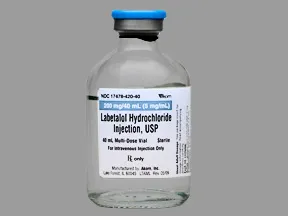 | |
| labetalol intravenous - | 5 mg/mL vial |  | |
| labetalol intravenous - | 5 mg/mL vial |  | |
| labetalol intravenous - | 5 mg/mL vial |  | |
| labetalol intravenous - | 5 mg/mL vial |  | |
| labetalol intravenous - | 5 mg/mL vial |  | |
| labetalol intravenous - | 20 mg/4 mL (5 mg/mL) solution |  | |
| labetalol intravenous - | 5 mg/mL vial |  | |
| labetalol intravenous - | 5 mg/mL vial |  | |
| labetalol intravenous - | 5 mg/mL vial |  | |
| labetalol intravenous - | 5 mg/mL vial |  | |
| labetalol intravenous - | 5 mg/mL vial |  | |
| labetalol oral - | 300 mg tablet | 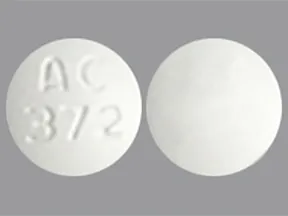 | |
| labetalol oral - | 200 mg tablet | 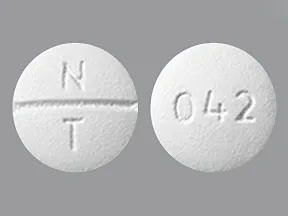 | |
| labetalol oral - | 100 mg tablet | 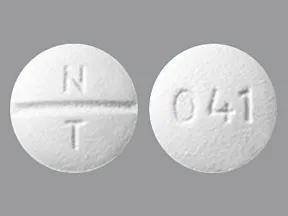 | |
| labetalol oral - | 100 mg tablet | 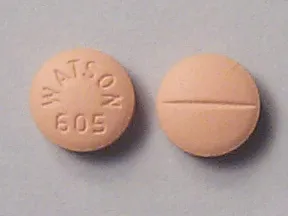 | |
| labetalol oral - | 300 mg tablet | 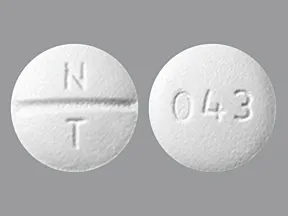 | |
| labetalol oral - | 300 mg tablet | 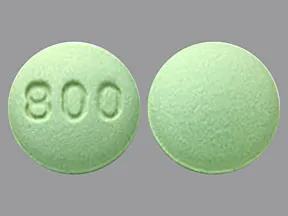 | |
| labetalol oral - | 200 mg tablet |  | |
| labetalol oral - | 100 mg tablet | 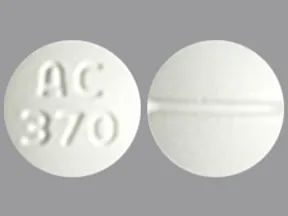 | |
| labetalol oral - | 100 mg tablet |  | |
| labetalol oral - | 100 mg tablet | 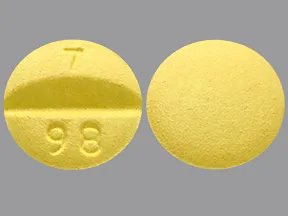 | |
| labetalol oral - | 300 mg tablet |  | |
| labetalol oral - | 200 mg tablet | 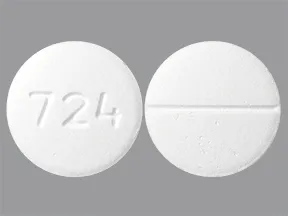 | |
| labetalol oral - | 100 mg tablet |  | |
| labetalol oral - | 200 mg tablet | 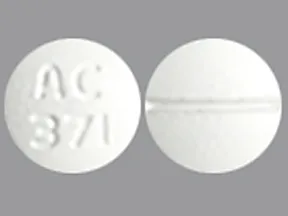 | |
| labetalol oral - | 200 mg tablet | 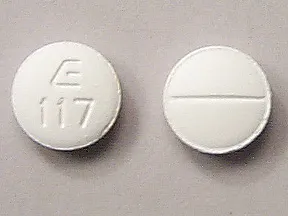 | |
| labetalol oral - | 200 mg tablet | 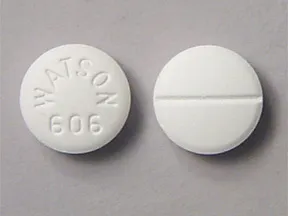 | |
| labetalol oral - | 100 mg tablet | 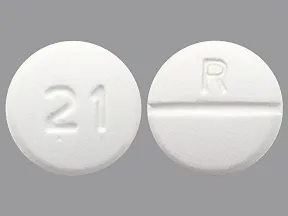 | |
| labetalol oral - | 200 mg tablet |  | |
| labetalol oral - | 300 mg tablet |  | |
| labetalol oral - | 300 mg tablet | 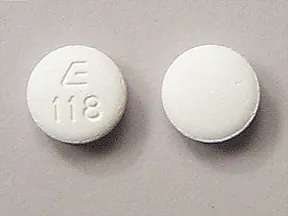 | |
| labetalol oral - | 100 mg tablet |  | |
| labetalol oral - | 300 mg tablet | 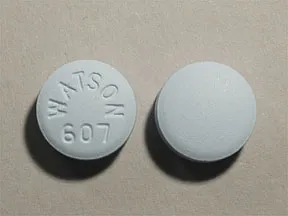 | |
| labetalol oral - | 300 mg tablet | 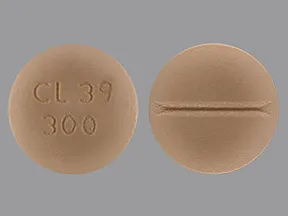 | |
| labetalol oral - | 200 mg tablet |  | |
| labetalol oral - | 300 mg tablet | 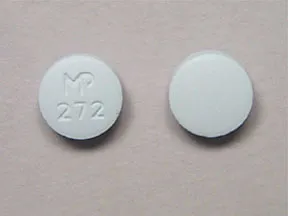 | |
| labetalol oral - | 200 mg tablet | 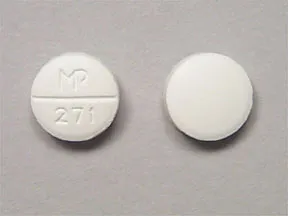 | |
| labetalol oral - | 100 mg tablet | 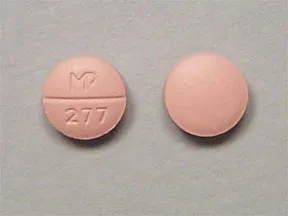 |
Copyright © 2010 First DataBank, Inc.
Patient Handout
labetalol oral
LABETALOL - ORAL
(luh-BET-uh-lol)
COMMON BRAND NAME(S): Normodyne, Trandate
WARNING: Do not stop taking this medication without consulting your doctor. Some conditions may become worse when you suddenly stop this drug. Some people who have suddenly stopped taking similar drugs have had chest pain, heart attack, and irregular heartbeat. If your doctor decides you should no longer use this drug, your doctor may direct you to gradually decrease your dose over 1 to 2 weeks.When gradually stopping this medication, it is recommended that you temporarily limit physical activity to decrease strain on the heart. Get medical help right away if you develop chest pain/tightness/pressure, chest pain spreading to the jaw/neck/arm, unusual sweating, trouble breathing, or fast/irregular heartbeat.
USES: Labetalol is used with or without other medications to treat high blood pressure (hypertension). Lowering high blood pressure helps prevent strokes, heart attacks, and kidney problems.This medication is both an alpha blocker and beta blocker. It works by blocking the action of certain natural chemicals in your body such as epinephrine on the heart and blood vessels. This effect lowers the heart rate, blood pressure, and strain on the heart.
HOW TO USE: See also Warning section.Take this medication by mouth as directed by your doctor, usually twice a day. You may take this medication with or without food, but it is important to choose one way and take this medication the same way with every dose.Dosage is based on your medical condition and response to treatment. To reduce your risk of side effects, your doctor may direct you to start this medication at a low dose and gradually increase your dose. Follow your doctor's instructions carefully.Use this medication regularly to get the most benefit from it. To help you remember, take it at the same times each day.For the treatment of high blood pressure, it may take several weeks before you get the full benefit of this drug. Keep taking this medication even if you feel well. Most people with high blood pressure do not feel sick.Tell your doctor if your condition does not get better or if it gets worse (your blood pressure readings remain high or increase).
SIDE EFFECTS: See also Warning and Precautions sections.Dizziness and tiredness may occur. Scalp tingling may also occur as your body adjusts to the medication. Decreased sexual ability has been reported rarely. If any of these effects last or get worse, tell your doctor or pharmacist promptly.To reduce the risk of dizziness and lightheadedness, get up slowly when rising from a sitting or lying position.This drug may reduce blood flow to your hands and feet, causing them to feel cold. Smoking may worsen this effect. Dress warmly and avoid tobacco use.Remember that this medication has been prescribed because your doctor has judged that the benefit to you is greater than the risk of side effects. Many people using this medication do not have serious side effects.Tell your doctor right away if you have any serious side effects, including: very slow heartbeat, fainting, blue fingers/toes, new or worsening symptoms of heart failure (such as shortness of breath, swelling ankles/feet, unusual tiredness, unusual/sudden weight gain), mental/mood changes (such as confusion, mood swings, depression).This drug may rarely cause serious (rarely fatal) liver disease. If you notice any of the following rare but serious side effects, get medical help right away: nausea/vomiting that doesn't stop, severe stomach/abdominal pain, yellowing eyes/skin, dark urine.A very serious allergic reaction to this drug is rare. However, get medical help right away if you notice any symptoms of a serious allergic reaction, including: rash, itching/swelling (especially of the face/tongue/throat), severe dizziness, trouble breathing.This is not a complete list of possible side effects. If you notice other effects not listed above, contact your doctor or pharmacist.In the US -Call your doctor for medical advice about side effects. You may report side effects to FDA at 1-800-FDA-1088 or at www.fda.gov/medwatch.In Canada - Call your doctor for medical advice about side effects. You may report side effects to Health Canada at 1-866-234-2345.
PRECAUTIONS: Before taking labetalol, tell your doctor or pharmacist if you are allergic to it; or if you have any other allergies. This product may contain inactive ingredients, which can cause allergic reactions or other problems. Talk to your pharmacist for more details.Before using this medication, tell your doctor or pharmacist your medical history, especially of: heart problems (such as heart failure, slow heartbeat, second- or third-degree atrioventricular block), breathing problems (such as asthma, chronic bronchitis, emphysema), kidney disease, liver disease, overactive thyroid disease (hyperthyroidism), serious allergic reactions including those needing treatment with epinephrine, blood circulation problems (such as Raynaud's disease, peripheral vascular disease), mental/mood disorders (such as depression), a certain muscle disease (myasthenia gravis), certain eye problems (cataracts, glaucoma).This drug may make you dizzy. Alcohol or marijuana (cannabis) can make you more dizzy. Do not drive, use machinery, or do anything that needs alertness until you can do it safely. Limit alcoholic beverages. Talk to your doctor if you are using marijuana (cannabis).Before having surgery (including cataract/glaucoma eye surgery), tell your doctor or dentist if you are taking or have ever taken this medication, and about all the other products you use (including prescription drugs, nonprescription drugs, and herbal products).This product may prevent the fast/pounding heartbeat you would usually feel when your blood sugar level falls too low (hypoglycemia). The risk is higher if you have diabetes, or are vomiting, fasting, or not eating regularly. Other symptoms of low blood sugar level, such as dizziness and sweating, are not affected by this drug.If you have diabetes, this product may make it harder to control your blood sugar levels. Check your blood sugar levels regularly as directed by your doctor. Tell your doctor right away if you have symptoms of high blood sugar such as increased thirst/urination. Your doctor may need to adjust your diabetes medication, exercise program, or diet.Children may be at greater risk for low blood sugar (hypoglycemia) while using this drug, especially if they are vomiting or not eating regularly. To help prevent low blood sugar, make sure children eat regularly. If your child cannot eat regularly, is vomiting, or has symptoms of low blood sugar (such as sweating, shaking), tell the doctor right away.Older adults may be more sensitive to the side effects of this drug, including dizziness and lightheadedness. These side effects can increase the risk of falling.Labetalol has been used to treat high blood pressure in pregnant women. It is important to control high blood pressure for the health of the mother and unborn baby. If you are planning pregnancy, become pregnant, or think you may be pregnant, discuss with your doctor the benefits and risks of using this medication during pregnancy. Rarely, babies born to mothers who took labetalol during pregnancy may have symptoms of low blood pressure, slow heartbeat, slow breathing, and low blood sugar (such as shaking, unusual sweating) for a few days after delivery. Tell the doctor right away if you notice any of these symptoms in your newborn.This medication passes into breast milk, and the effect on a nursing infant is unknown. Consult your doctor before breastfeeding.
DRUG INTERACTIONS: See also Precautions section.Drug interactions may change how your medications work or increase your risk for serious side effects. This document does not contain all possible drug interactions. Keep a list of all the products you use (including prescription/nonprescription drugs and herbal products) and share it with your doctor and pharmacist. Do not start, stop, or change the dosage of any medicines without your doctor's approval.Some products that may interact with this drug include: cimetidine, fingolimod.Some products have ingredients that could raise your heart rate or blood pressure. Tell your pharmacist what products you are using, and ask how to use them safely (especially cough-and-cold products, diet aids, or NSAIDs such as ibuprofen/naproxen).This medication may interfere with certain medical/lab tests, possibly causing false test results. Make sure lab personnel and all your doctors know you use this drug.
OVERDOSE: If someone has overdosed and has serious symptoms such as passing out or trouble breathing, call 911. Otherwise, call a poison control center right away. US residents can call their local poison control center at 1-800-222-1222. Canada residents can call a provincial poison control center. Symptoms of overdose may include: very slow heartbeat, severe dizziness, severe weakness, fainting, trouble breathing.
NOTES: Do not share this medication with others.Talk with your doctor about making changes to your lifestyle that may help this medication work better (such as stress reduction programs, exercise, and dietary changes).Have your blood pressure and pulse (heart rate) checked regularly while taking this medication. Learn how to check your own blood pressure and pulse at home, and share the results with your doctor.Lab and/or medical tests (such as liver function) should be done while you are taking this medication. Keep all medical and lab appointments. Consult your doctor for more details.
MISSED DOSE: If you miss a dose, take it as soon as you remember. If it is near the time of the next dose, skip the missed dose. Take your next dose at the regular time. Do not double the dose to catch up.
STORAGE: Store at room temperature away from light and moisture. Do not store in the bathroom. Keep all medications away from children and pets.Do not flush medications down the toilet or pour them into a drain unless instructed to do so. Properly discard this product when it is expired or no longer needed. Consult your pharmacist or local waste disposal company.
Information last revised March 2024. Copyright(c) 2024 First Databank, Inc.
IMPORTANT: HOW TO USE THIS INFORMATION: This is a summary and does NOT have all possible information about this product. This information does not assure that this product is safe, effective, or appropriate for you. This information is not individual medical advice and does not substitute for the advice of your health care professional. Always ask your health care professional for complete information about this product and your specific health needs.
Formulary
Adding plans allows you to compare formulary status to other drugs in the same class.
To view formulary information first create a list of plans. Your list will be saved and can be edited at any time.
Adding plans allows you to:
- View the formulary and any restrictions for each plan.
- Manage and view all your plans together – even plans in different states.
- Compare formulary status to other drugs in the same class.
- Access your plan list on any device – mobile or desktop.






